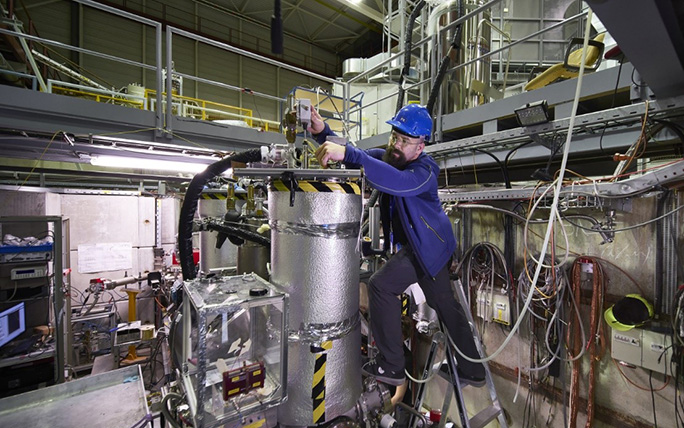AVA Fellow co-authors Nature article

AVA Fellow Markus Wiesinger, a member of the BASE collaboration, co-authored a paper that was just published in one of the most impactful science journals – Nature.
In the article, the BASE collaboration reports the first laboratory search for an interaction between antimatter and a candidate particle for dark-matter, the hypothetical axion. An interaction between the two would not only establish the origin of dark-matter, but would also revolutionise long-established certainties about the symmetry properties of nature.
Dark-matter and the imbalance between matter and antimatter are two of the biggest mysteries in physics and scientists are trying to find a connection between the two. If a relation were confirmed, it would present a huge progress in our knowledge and understanding of the fundamental laws of nature.
Working at CERN’s antimatter factory, the BASE team obtained the first laboratory-based limits on the existence of dark-matter axions. In their experiment, they assumed that axions prefer to interact with antimatter, rather than with matter and looked for oscillations in the antiproton’s “spin”. An unexpectedly large axion–antiproton interaction strength would lead to variations in the frequency of this precession.
To measure this, the group around spokesperson Stefan Ulmer first confined antiprotons in a Penning Trap. From this cloud of antimatter particles, they then extracted a single antiproton into a high-precision multi-Penning trap to measure and flip its spin state. Over the course of three months, the researchers performed nearly one thousand high precision measurements. This allowed them to compare their experimental values with theoretical predictions.
Whilst the BASE researchers were not able to detect any variations in their measurements and hence no direct axion–antiproton interaction, they were able to put lower limits on the axion–antiproton interaction strength for a whole range of possible axion masses. Their results are a unique probe of new phenomena and could pave the way to an improved understanding of how our universe works.
Further information:
C. Smorra,…, M. Wiesinger, et al., “Direct limits on the interaction of antiprotons with axion-like dark matter”, Nature 575 (2019)